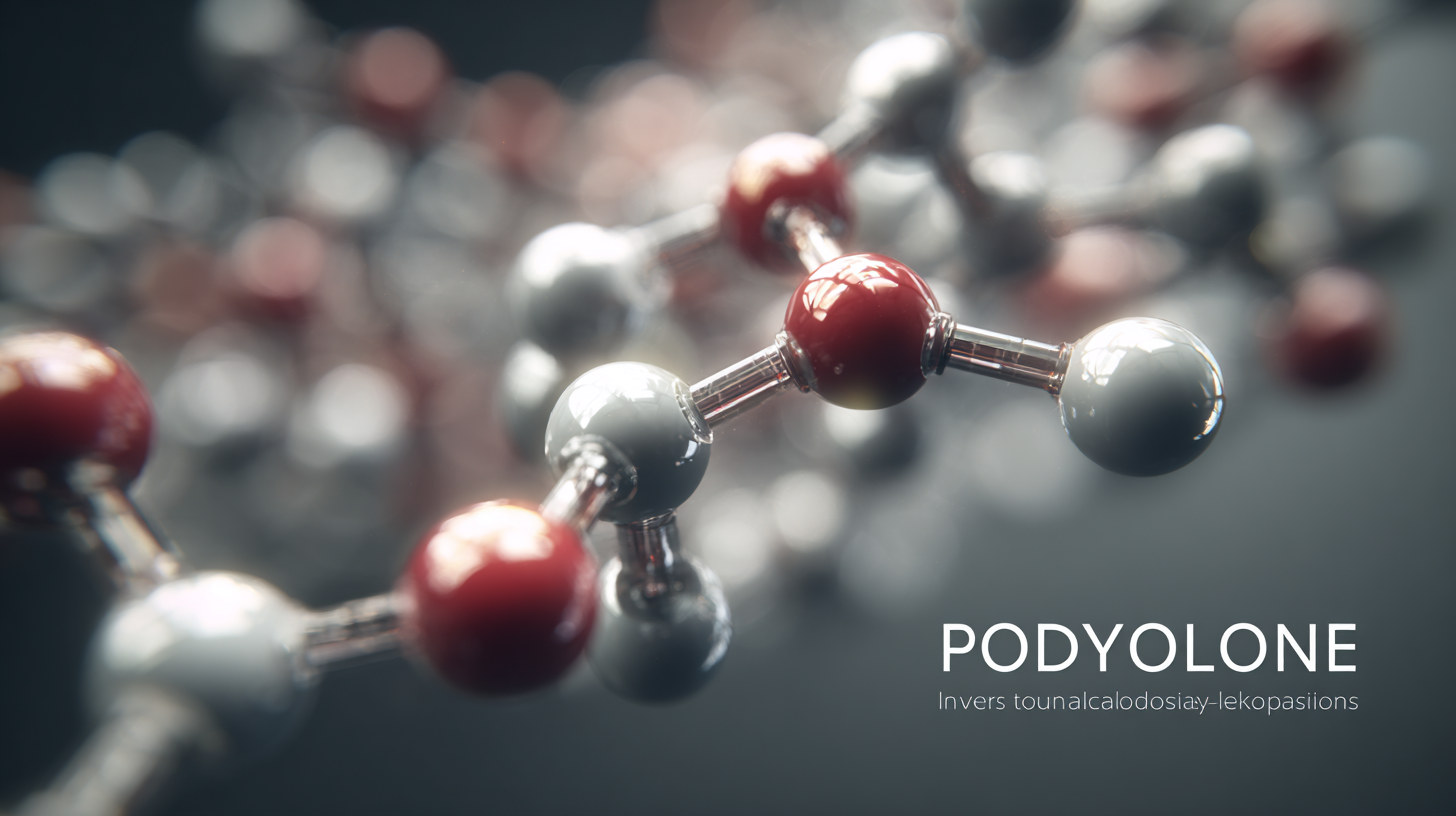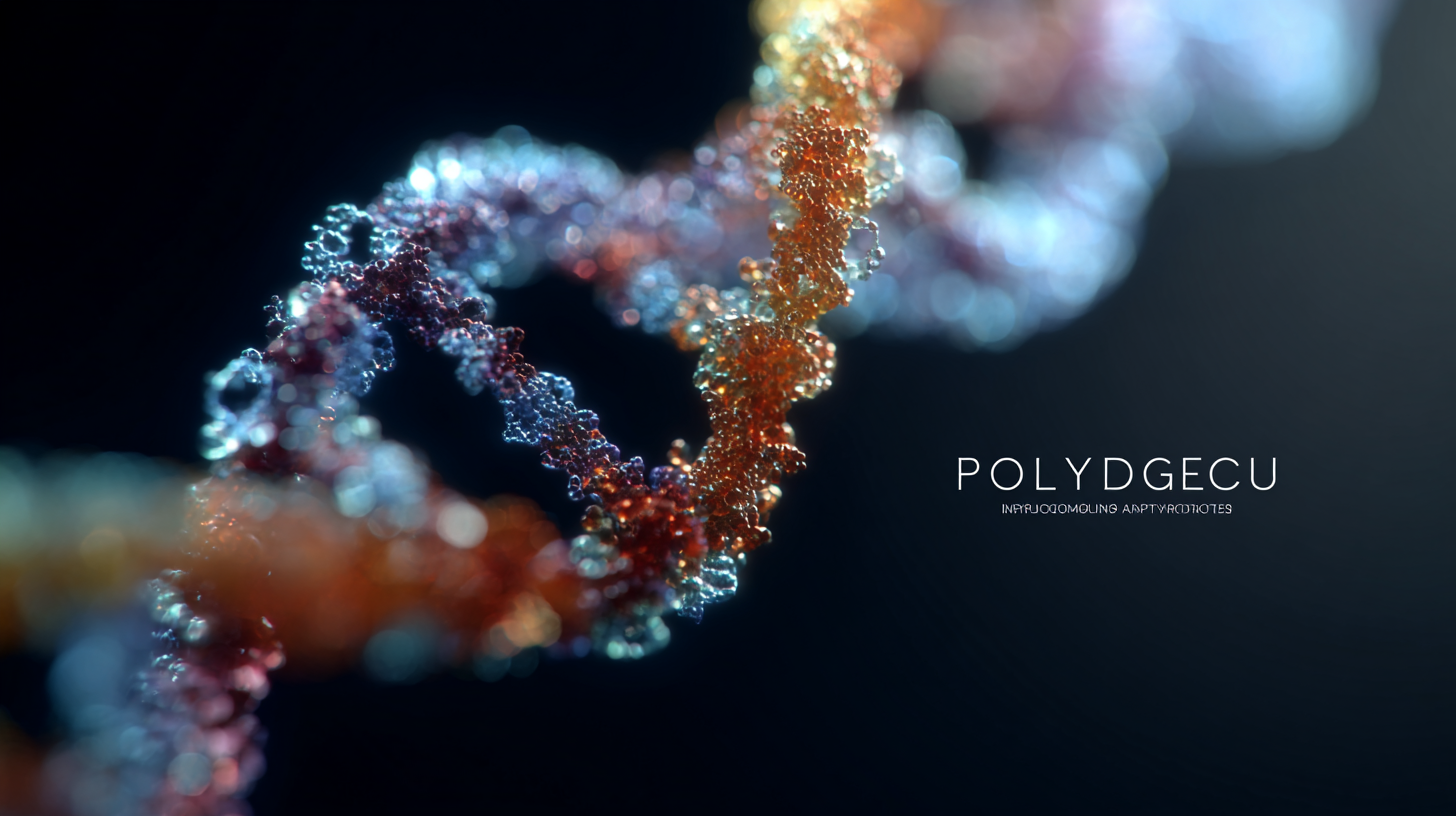In recent years, the demand for innovative applications of Polydeoxyribonucleotide (PDRN) has surged, driven by advancements in biotechnology and a growing emphasis on regenerative medicine. According to a report from Global Market Insights, the global market for PDRN is projected to reach $1 billion by 2026, growing at a CAGR of over 10% from 2021. This surge can be attributed to the increasing use of PDRN in dermatology, orthopedics, and wound healing, showcasing its versatility and efficacy as a bioactive agent. As China's top manufacturers lead the charge in PDRN production, their contributions have established a robust export footprint across global markets, amplifying the reach and impact of this cutting-edge biopolymer. This blog will explore the best applications of Polydeoxyribonucleotide, highlighting innovative solutions that are transforming various sectors while underlining the importance of high-quality manufacturing practices.

Polydeoxyribonucleotide (PDRN) is a fascinating biopolymer derived from salmon sperm, recognized for its significant role in tissue repair and regeneration. Its ability to stimulate cell proliferation makes it a valuable component in various medical treatments, including wound healing, skin rejuvenation, and even hair restoration. The molecular structure of PDRN enables it to interact effectively with cellular pathways, promoting healing processes and enhancing the effectiveness of other therapeutic agents.

When considering the application of PDRN in clinical practices, it's essential to understand the product's formulation. Here are a couple of tips:
Recent advancements suggest that PDRN also plays a promising role in aesthetic treatments. By incorporating PDRN into dermal fillers, clinicians can not only enhance skin texture but also promote longer-lasting results. Keep in mind that personalization is key; tailoring treatment plans to individual skin conditions can maximize the benefits of PDRN applications.
Emerging technologies in polydeoxyribonucleotide (PDRN) synthesis are set to revolutionize its application in regenerative medicine by 2025. As researchers explore innovative synthesis methods, the potential of PDRN in treating various conditions, from osteoarthritis to skin wound healing, is becoming increasingly evident. The recent studies highlighting PDRN's role in ameliorating IL-1β-induced impairment in chondrogenic differentiation demonstrate its efficacy in improving joint health, positioning it as a critical therapeutic agent for osteoarthritis—a condition affecting millions globally.
Additionally, advancements in PDRN synthesis are also facilitating its application in dermatology, where its role in enhancing wound healing is gaining traction. By promoting cell migration and accelerating recovery times, PDRN is emerging as a reliable biological platform for addressing skin injuries. With these technological advancements, the future of PDRN holds great promise, paving the way for innovative solutions that address the pressing challenges in both orthopedic and dermatological care. The landscape of regenerative therapy is on the brink of transformation, driven by the significant potential of polydeoxyribonucleotide in the years to come.

Polydeoxyribonucleotides (PDRNs) are emerging as transformative agents in the realm of biotechnology, offering a plethora of applications, particularly in regenerative medicine and wound healing. These biomolecules, derived from salmon milt or other sources, possess unique properties that promote cellular restoration and tissue repair. Innovative biotechnological approaches harness their capacity to stimulate angiogenesis and modulate inflammatory responses, contributing to enhanced healing processes and improved patient outcomes.
Recent advancements in delivery methods have further amplified the utility of PDRNs. Nanoparticle technology, for instance, allows for targeted and sustained release of PDRNs at the injury site, maximizing their therapeutic effects while minimizing potential side effects. Moreover, the integration of PDRNs into 3D bioprinting has opened new avenues for creating bioengineered tissues that closely mimic natural structures, thus revolutionizing tissue engineering. As research continues to unveil the multifaceted roles of PDRNs, their application in innovative biotechnological solutions is set to redefine the landscape of medical treatments and regenerative therapies.
The future of polydeoxyribonucleotide (PDRN) delivery systems is poised for significant advancements as researchers focus on enhancing targeted therapies. According to a report from Grand View Research, the global PDRN market is expected to grow at a CAGR of 14.2% from 2022 to 2030, driven by rising demand for effective wound healing and tissue regeneration solutions. Innovative delivery methods, such as nano-carriers and biodegradable scaffolds, are currently at the forefront of research. These approaches not only improve the bioavailability of PDRN but also allow for precise targeting, minimizing side effects and maximizing therapeutic efficacy.
Moreover, the integration of smart biomaterials into PDRN delivery systems is gaining traction. A study published in the journal *Biomaterials* highlights that hydrogels infused with PDRN can gradually release the molecule in situ, promoting sustained tissue repair while reducing the frequency of administration. With the increasing investment in biotechnology research, the synergy between advanced delivery systems and PDRN formulations is likely to enhance treatment outcomes in dermatology and regenerative medicine. As these technologies evolve, clinicians and patients will benefit from more personalized and effective therapeutic options.
The field of polydeoxyribonucleotide (PDRN) research is burgeoning, presenting both challenges and opportunities for future applications. Recent industry reports suggest that the global market for PDRN is projected to reach $1.2 billion by 2026, growing at a CAGR of over 10%. This growth is fueled by rising demand for regenerative medicine and cosmetic procedures that utilize PDRN for its healing properties. However, researchers face significant hurdles, including regulatory complexities and the necessity for robust clinical trials to validate efficacy and safety.
To navigate these challenges, researchers should focus on multi-disciplinary collaboration. Combining expertise from biotechnology, pharmacology, and regulatory affairs can streamline the R&D process. Conducting comprehensive market analysis is essential for identifying specific needs and opportunities in the evolving landscape of PDRN applications.
**Tip:** Make sure to stay updated on the latest regulatory guidelines, as they can significantly impact your research timelines and overall project feasibility.
Additionally, investing in advanced technologies such as CRISPR and nanotechnology can enhance the development of PDRN products, paving the way for innovative therapeutic solutions that address a wide range of medical conditions.
**Tip:** Regularly participate in industry conferences and workshops to network with other professionals and gain insights into emerging trends and best practices in PDRN research.
